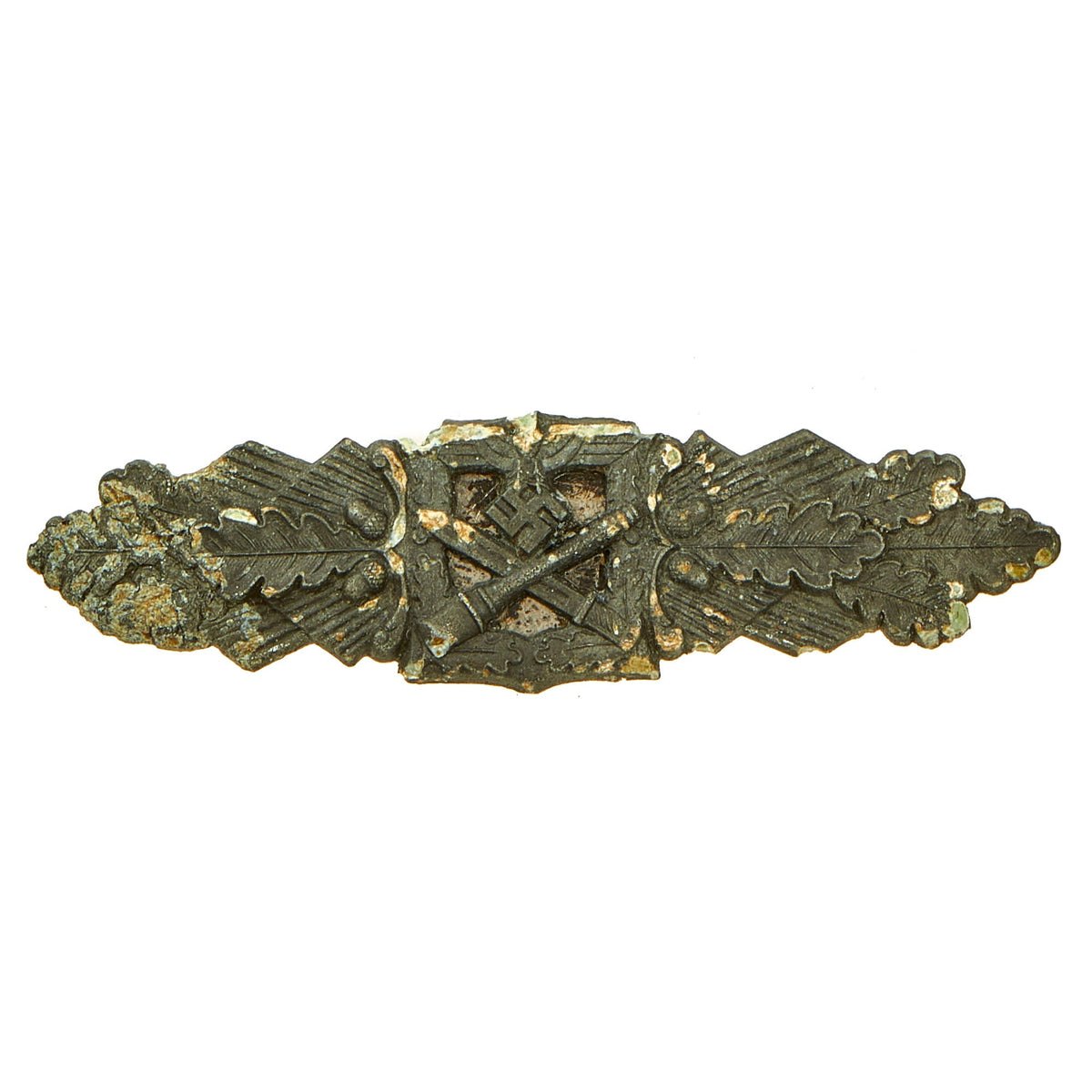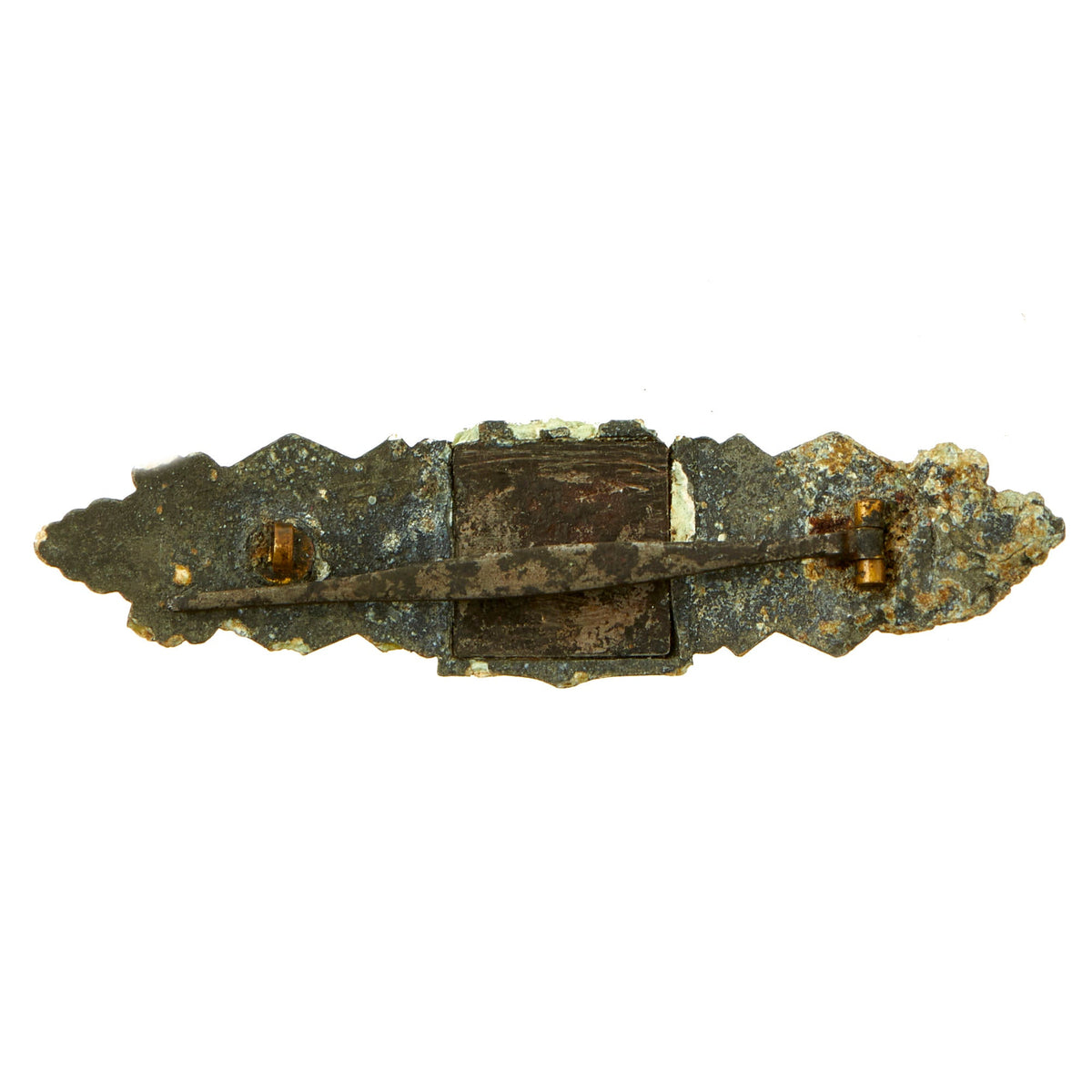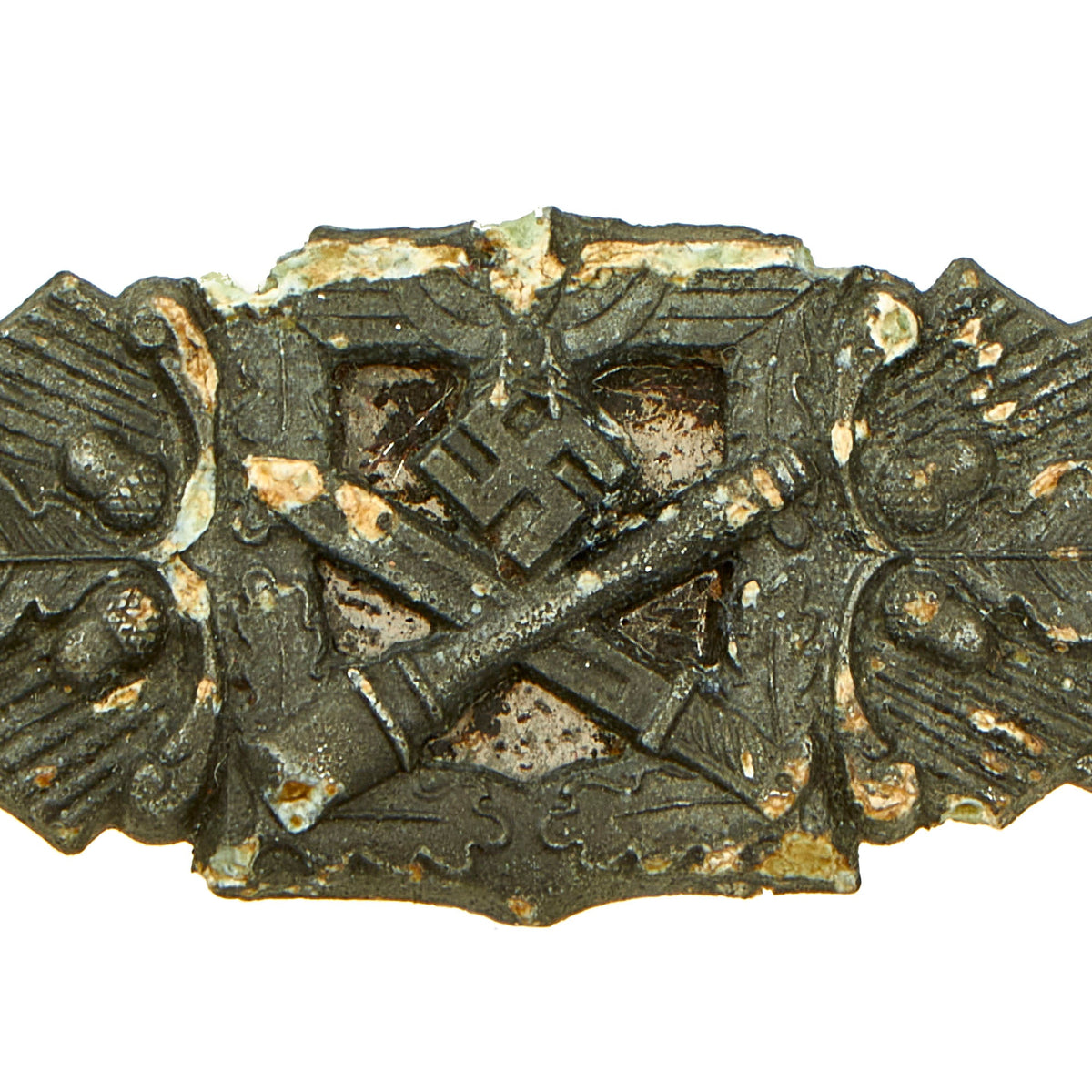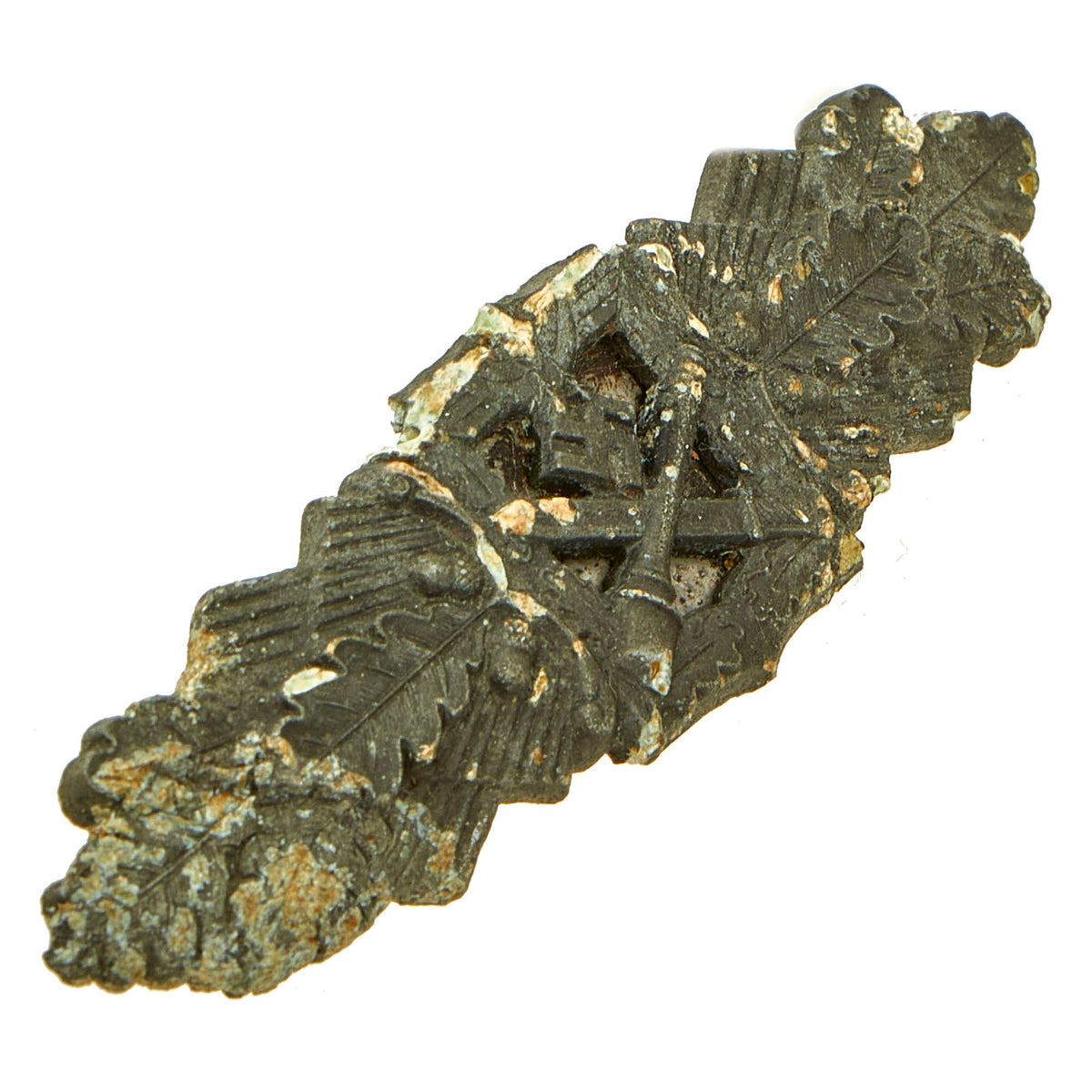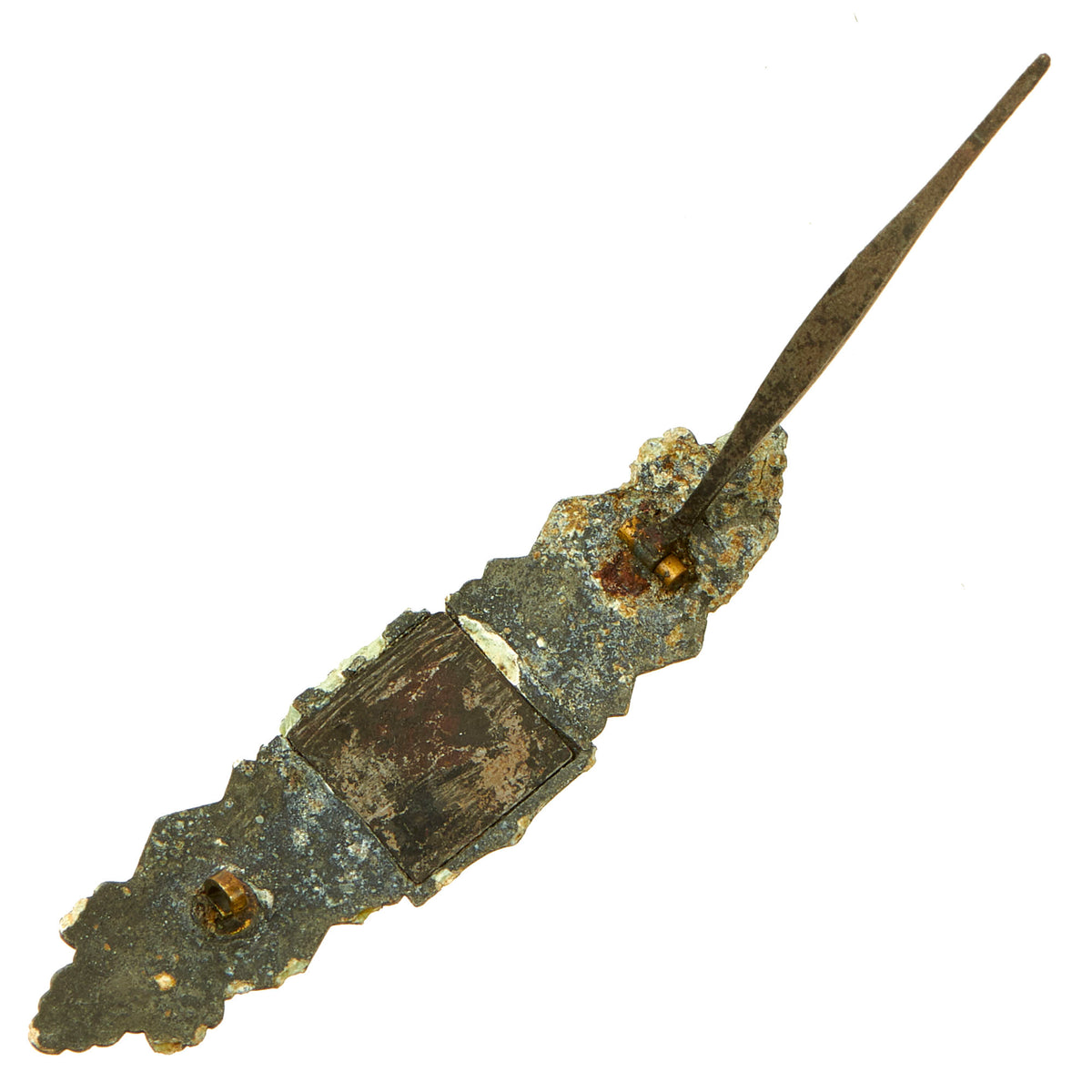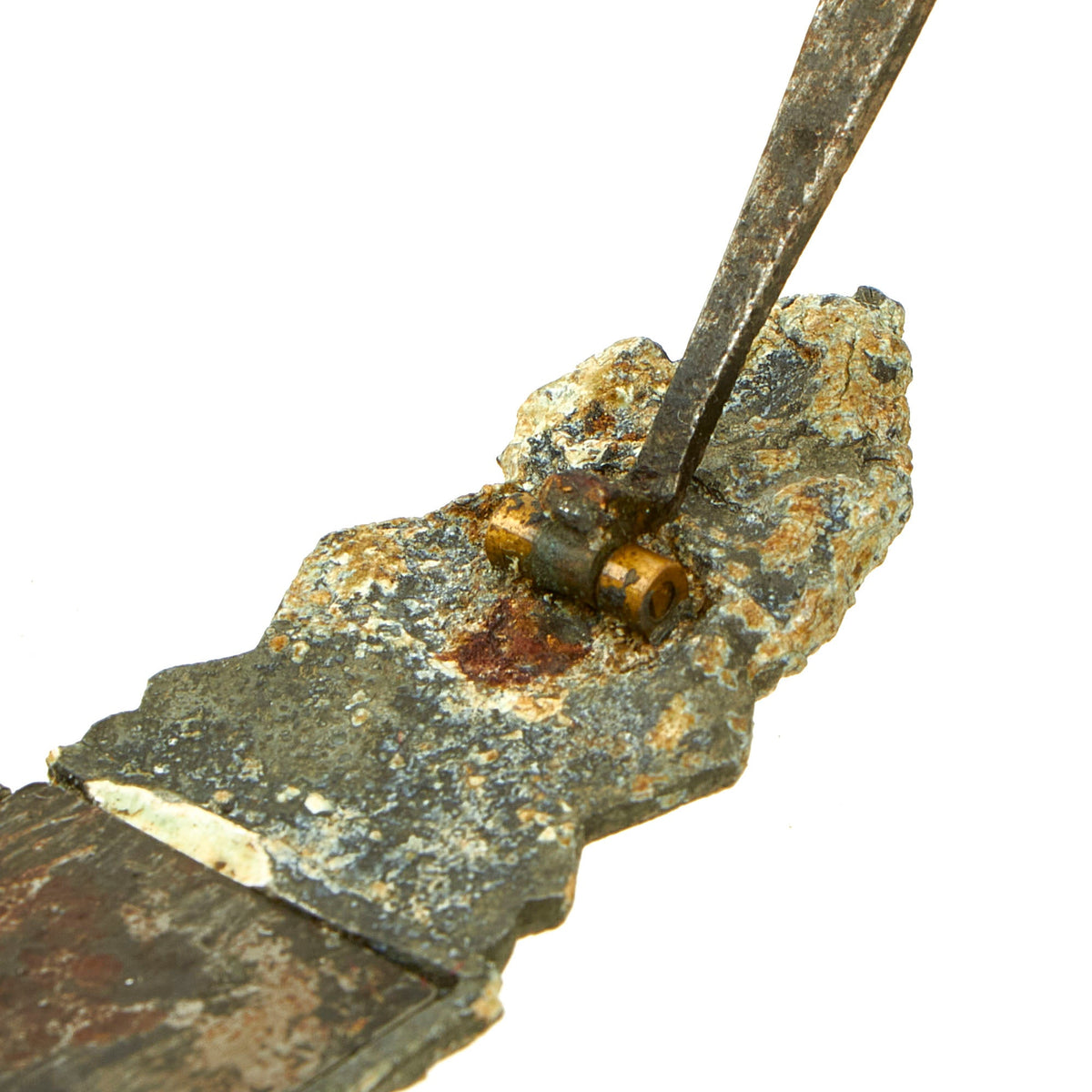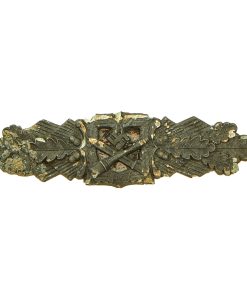Original German WWII “Battlefield Pickup” Condition Close Combat Clasp Original Items
$ 295,00 $ 118,00
Original Item: Only One Available. Known in German as a Nahrkampfspange (Melee Clasp), this award is constructed of slightly vaulted zinc. The front side has a Reichsadler (national eagle) over a crossed bayonet and hand grenade in the centerpiece. There are sun rays emanating from the center of the left and right sides, with with four oak leaves and two acorns on each side. The reverse is plain, with a square magnetic backing plate with horizontal pin back, with a barrel hinge and a flat wire catch on the reverse. The clasp measures 3.85 inches (97.85 mm) W x 1.04 inches (26.50 mm) H.
There may have been maker markings on the back of the badge, however this example looks to have sat in the dirt on the field for a period of time, which resulted in oxidation to the zinc body, as well as the steel backing plate. This made the reverse rough, which unfortunately has made reading any markings impossible. Overall condition shows significant oxidation of the zinc, which has bubbled and discolored.
A very interesting “battlefield pickup” condition example, ready to display!
The Close Combat Clasp (German: Nahkampfspange) is a German military award instituted on 25 November 1942 for achievement in hand-to-hand fighting in close quarters. The Close Combat Clasp was worn above the upper left uniform pocket. The clasp was die-cast and made of either tombac or later zinc, with a slightly curved centerpiece consisting of the national emblem surmounting a crossed bayonet and hand grenade.
The award was bestowed in three classes: Bronze for 15 close combat battles; Silver for 25 battles; and Gold for 50+ battles. The Gold Close Combat Clasp was often regarded in higher esteem than the Knight’s Cross of the Iron Cross by the German infantry. Of the roughly 18–20 million soldiers of the German Wehrmacht and Waffen-SS, 36,400 received the Bronze Class, 9,500 the Silver Class and 631 the Gold Class.
Fast Shipping with Professional Packaging
Thanks to our longstanding association with UPS FedEx DHL, and other major international carriers, we are able to provide a range of shipping options. Our warehouse staff is expertly trained and will wrap your products according to our exact and precise specifications. Prior to shipping, your goods will be thoroughly examined and securely secured. We ship to thousands clients each day across multiple countries. This shows how we're dedicated to be the largest retailer on the internet. Warehouses and distribution centres can be located throughout Europe as well as the USA.
Note: Orders with more than one item will be assigned a processing date depending on the item.
Before shipping before shipping, we'll conduct a thorough inspection of the items you have ordered. Today, the majority of orders will be delivered within 48 hours. The delivery time will be between 3-7 days.
Returns
The stock is dynamic and we cannot completely manage it because multiple stakeholders are involved, including our factory and warehouse. So the actual stock may alter at any time. It's possible that you may not receive your order once the order has been made.
Our policy is valid for a period of 30 days. If you don't receive the product within 30 days, we are not able to issue a refund or an exchange.
You can only return an item if it is unused and in the same state as the day you received it. You must have the item in its original packaging.
Related products
Uncategorized
Uncategorized
Uncategorized
Angolan Rebel 1970s era 60mm Inert Display Mortar from Angolan Civil War Original Items
Uncategorized
Uncategorized
Uncategorized
Band of Brothers ORIGINAL GERMAN WWII Le. F.H. 18 10.5cm ARTILLERY PIECE Original Items
Uncategorized
Armoured Fighting Vehicles of the World: AFVs of World War One (Hardcover Book) New Made Items
Uncategorized
Uncategorized
Uncategorized
Uncategorized
Uncategorized
Uncategorized
Uncategorized
Armored Burgonet Helmet & Polearm from Scottish Castle Leith Hall Circa 1700 Original Items
Uncategorized
Uncategorized
Uncategorized
Uncategorized
